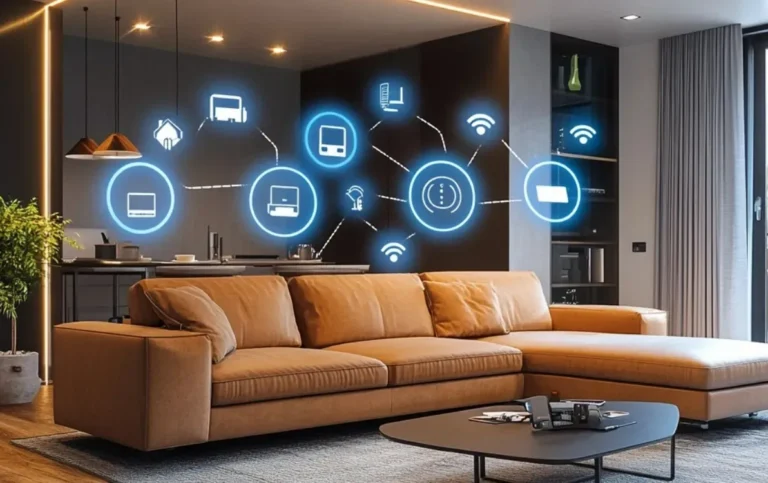Smart Gadgets Revolutionizing Our Daily Lives
In the rapidly evolving world of technology, smart gadgets have become integral to our daily lives. From smartphones that serve as our personal assistants to smart home devices that automate our living spaces, these innovative tools are reshaping how we interact with the world. But what exactly are smart gadgets. At their core, they are electronic devices equipped with advanced technologies like artificial intelligence (AI), Internet of Things (IoT) connectivity, and sensors that enable them to perform tasks autonomously or with minimal human intervention.
The rise of smart gadgets reflects humanity’s quest for convenience, efficiency, and connectivity. Whether it’s a smartwatch tracking your fitness goals or a smart thermostat optimizing your home’s energy use, these devices are designed to make life easier, smarter, and more sustainable. This article explores the evolution of smart gadgets, their various types, benefits, challenges, and the exciting future that awaits this transformative technology.
The Evolution of Smart Gadgets
The journey of smart gadgets began with the advent of personal computing and the internet. Early devices like pagers and basic mobile phones laid the groundwork for connectivity, but the real revolution started with the introduction of smartphones in the late 2000s. The launch of the iPhone in 2007 marked a turning point, combining computing power, internet access, and intuitive interfaces in a single device. This paved the way for a new category of gadgets that could connect, communicate, and compute.
The integration of IoT technology in the 2010s further accelerated the development of smart gadgets. IoT enabled devices to communicate with each other over the internet, creating ecosystems where gadgets could share data and work collaboratively. For example, a smart speaker could connect to a smart light bulb, allowing voice-controlled lighting. Meanwhile, advancements in AI and machine learning have made gadgets smarter, enabling them to learn from user behavior and make decisions autonomously.
Today, smart gadgets encompass a wide range of devices, from wearables to home automation systems. The global market for smart devices is projected to grow significantly, with estimates suggesting it will reach over $1 trillion by 2030. This growth is driven by increasing consumer demand, technological advancements, and the expansion of 5G networks, which enable faster and more reliable connectivity.
Types of Smart Gadgets
Smart gadgets come in various forms, each designed to enhance specific aspects of our lives. Here are some of the most popular categories:
1. Smartphones and Tablets
Smartphones are the cornerstone of the smart gadget ecosystem. These pocket-sized computers offer communication, entertainment, productivity, and more. With apps for everything from banking to fitness tracking, smartphones have become indispensable. Tablets, their larger counterparts, provide similar functionality with enhanced screens for work and media consumption.
2. Wearable Devices
Wearables like smartwatches and fitness trackers have revolutionized personal health and fitness. Devices such as the Apple Watch or Fitbit monitor heart rate, track physical activity, and even detect irregular health patterns. Beyond health, wearables offer notifications, GPS navigation, and contactless payments, making them versatile companions.
3. Smart Home Devices
Smart home gadgets, such as smart speakers (e.g., Amazon Echo), smart thermostats (e.g., Nest), and smart security systems, bring automation to our living spaces. These devices allow users to control lighting, temperature, and security through apps or voice commands, enhancing convenience and energy efficiency.
4. Smart Appliances
From smart refrigerators that track inventory to washing machines that can be controlled remotely, smart appliances are transforming household chores. These devices often integrate with home ecosystems, allowing seamless communication with other gadgets.
5. Smart Entertainment Systems
Smart TVs, streaming devices, and soundbars equipped with AI and internet connectivity offer personalized entertainment experiences. They can recommend content based on viewing habits, stream high-definition media, and integrate with voice assistants for hands-free control.

Benefits of Smart Gadgets
The proliferation of smart gadgets has brought numerous benefits, transforming how we live, work, and play. Here are some key advantages:
- Convenience: Smart gadgets automate routine tasks, saving time and effort. For example, a smart vacuum cleaner can clean your floors while you focus on other activities.
- Efficiency: Devices like smart thermostats optimize energy usage, reducing utility bills and environmental impact.
- Health Monitoring: Wearables provide real-time health data, encouraging proactive wellness and early detection of health issues.
- Connectivity: IoT-enabled gadgets create interconnected ecosystems, allowing seamless communication between devices.
- Personalization: AI-driven gadgets learn user preferences, offering tailored experiences, such as curated playlists or customized home settings.
These benefits have made smart gadgets appealing to a wide audience, from tech enthusiasts to everyday consumers seeking practical solutions.
Challenges and Concerns
Despite their advantages, smart gadgets come with challenges that warrant attention. Addressing these concerns is crucial for their sustainable adoption.
1. Privacy and Security
Smart gadgets often collect sensitive data, raising concerns about privacy. For instance, smart speakers may record conversations, and security cameras could be vulnerable to hacking. Manufacturers must prioritize robust encryption and transparent data policies to protect users.
2. Cost
High-end smart gadgets can be expensive, limiting accessibility for some consumers. While prices are gradually decreasing, affordability remains a barrier in certain markets.
3. Compatibility
Not all smart devices work seamlessly together, especially if they come from different brands. Interoperability issues can frustrate users and hinder the creation of cohesive smart ecosystems.
4. E-Waste
The rapid pace of technological advancement leads to frequent device upgrades, contributing to electronic waste. Sustainable design and recycling programs are essential to mitigate this issue.
The Future of Smart Gadgets
The future of smart gadgets is brimming with possibilities. Emerging technologies like 6G, advanced AI, and quantum computing will further enhance device capabilities. For example, 6G networks promise ultra-low latency, enabling real-time applications like augmented reality (AR) and virtual reality (VR) on smart glasses.
AI will continue to play a pivotal role, making gadgets more intuitive and predictive. Imagine a smart fridge that not only tracks inventory but also suggests recipes based on available ingredients and your dietary preferences. Similarly, advancements in battery technology will lead to longer-lasting, energy-efficient devices.
Sustainability will also shape the future of smart gadgets. Manufacturers are increasingly focusing on eco-friendly materials and modular designs that allow users to upgrade components rather than replace entire devices. Additionally, smart gadgets will play a crucial role in smart cities, optimizing traffic, energy, and public services through interconnected systems.
Conclusion
Smart gadgets have transformed the way we live, offering unprecedented convenience, efficiency, and connectivity. From smartphones to smart home systems, these devices have become integral to modern life. While challenges like privacy, cost, and e-waste persist, ongoing innovations are addressing these issues, paving the way for a smarter, more sustainable future.
As technology continues to evolve, smart gadgets will become even more integrated into our daily routines, enhancing our ability to work, play, and connect. By embracing these innovations responsibly, we can harness their full potential to create a more efficient and connected world.






